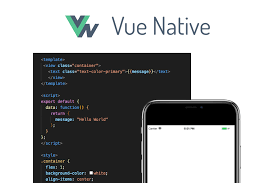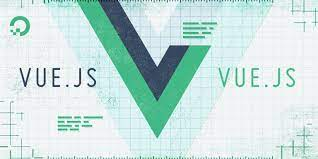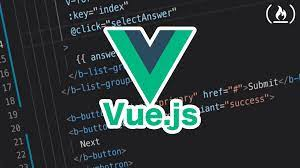Commercial Vue software development
Introduction to Vue.js
Vue.js is a JavaScript framework for building user interfaces and single-page applications. It was created by Evan You, and is now maintained by an open source community. Vue.js is widely used in China, and has been gaining popularity in the Western world over the past few years. If you're new to Vue.js, the best place to start is the official documentation. This will give you an overview of the framework and how it works. Once you've read through the docs, you can try out some of the examples on CodePen or JSFiddle.
Getting started with Vue.js development
In order to get started with Vue.js development, you will need to install the Vue.js CLI. Once you have installed the CLI, you can create a new project using the vue create command. Once your project has been created, you will need to open it in your editor of choice and begin adding code. The main file that you will work with is the App.vue file. This file contains the root component of your application and defines the overall structure of your app. In order to add interactivity to your app, you will need to use Vue's support for built-in directives. Directives are special attributes that tell Vue how to modify the DOM in response to data changes. Some of the most common directives are v-if , v-for , and v-on . Once you have added some interactivity to your app, you will need to compile it for production. To do this, you can use the Vue CLI's built-in webpack template. This template will package your code into a single JavaScript file that can be included on a web page. After your app has been compiled for production, you can deploy it to a server or host it statically on a CDN. If you choose to deploy your app on a server, you will need to set up a router so that users can navigate between different pages in your app. One of the important concepts for vue and some other libraries is a two way data binding:
a concept in software development that allows changes to a data model to be automatically reflected in the user interface, and vice versa. In other words, it enables the synchronization of data between the model and the view in real time.Understanding Vue.js templates and components
One of the most important aspects of Vue.js is its template system. This system allows developers to define how their application should look and behave, without having to write any JavaScript code. In addition, templates can be reused across different parts of an application, making development more flexible and efficient. Components are another key concept in Vue.js. Components are self-contained units that can be reused throughout an application. Each component has its own template, which defines how the component should look and behave. By modularizing an application into components, development can be more streamlined and efficient.
Creating dynamic user interfaces with Vue.js
User interface (UI) design is all about how a user interacts with a software application. It�s the part of the software that the user sees and interacts with. A well-designed UI is important for two reasons. First, creating web apps with it can make using the software easier and more enjoyable for the user. Second, it can make the software more efficient to use, which can save time and money. Creating dynamic UIs with Vue.js can help you achieve both of these goals. Vue.js is a JavaScript framework that lets you create reusable components that can be used in your software�s front-end code. This means that you can create UIs that are more responsive and engaging for users, and that are easier to update and maintain over time. In this article, we�ll show you how to create dynamic UIs with Vue.js by building a simple task list application. We�ll start by scaffolding out the project with the Vue CLI tool, then we�ll build out our UI components and hooks them up to our data model. By the end of this article, you�ll have a good understanding of how to use Vue.js to create dynamic UIs for your own web applications.

Building scalable and maintainable Vue.js applications
In order to build scalable and maintainable Vue.js applications, it is important to keep a few things in mind. First, when building your application, you should aim to create modular and reusable components. This will make your code more manageable and easier to understand. Second, you should make use of Vuex, a centralized state management library, when dealing with data that is shared between multiple components. This will help keep your code organized and consistent. Finally, you should always test your code before deploying it to production. This will ensure that your application is stable and free of bugs.
Advanced Vue.js techniques and best practices
As a commercial Vue.js software development company, we are always looking for ways to improve our development process and deliver better products to our clients. In this blog post, we will share some of our advanced Vue.js techniques and best practices that we have found to be helpful in our work. We hope that you find these tips and tricks useful in your own Vue.js development!
Integrating Vue.js with other technologies
Vue.js is a popular JavaScript framework that can be used to develop interactive web and mobile applications. It is easy to integrate Vue.js with other technologies such as
Laravel, Ruby on Rails, and Node.js. In this article, we will discuss how to integrate Vue.js with other technologies.

Debugging and testing Vue.js applications
Debugging and testing Vue.js applications can be a challenge, but there are some tools that can help. The first step is to use the Vue.js devtools, which will give you access to the Vue instance and allow you to inspect the data and components. Next, you can use a linter such as ESLint to find errors in your implementation. The Vue.js team recommends using the airbnb-base linting ruleset. Finally, you need to choose a testing framework. There are many options and frameworks available, but Jest is a good choice for most projects. With Jest, you can start unit testing for your components and run them in a headless browser or in Node.js.

Deploying Vue.js applications to production
Vue.js is a powerful JavaScript framework that can be used to build robust and user-friendly high performance web applications. When it comes to deploying these applications to production, there are a few considerations that need to be made in order to ensure a smooth and successful transition. One of the first things to keep in mind is that Vue.js applications are typically composed of multiple components, each of which may have its own dependencies. As such, it's important to manage these dependencies carefully and ensure that they are all compatible with one another before pushing any code changes to production. Another consideration is the size and complexity of your existing Vue.js application. If your application is large and complex, it may be advisable to break it down into smaller pieces that can be deployed incrementally. This will help reduce the risk of introducing new bugs or issues with the deployment process itself. Finally, you'll need to take care when configuring your production environment for your Vue.js application. In particular, you'll need to make sure that your server is configured correctly for serving static assets (such as .css and .js files) and that caching is properly configured to avoid any potential performance issues.
Common challenges and pitfalls in Vue.js development
One common challenge faced by developers using Vue.js is managing state. Vue.js does not have a built-in state management solution, so developers must use third-party libraries or build their own solutions. This can be difficult to do correctly, and it can lead to problems such as unexpected behavior or performance issues. Another challenge with Vue.js development is debugging applications. Because Vue.js applications are often complex, debugging can be difficult and time-consuming. Additionally, errors in Vue.js applications can be hard to track down because of the way the framework renders components. Finally, another pitfall of developing with Vue.js is choosing the wrong tool for the job. There are many different libraries and tools available for use with Vue.js, and not all of them are suitable for every project. Choosing the wrong tool can lead to problems such as increased complexity or decreased performance.

How to choose a Vue.js development company
When it comes to choosing a Vue.js development company, there are a few key considerations to keep in mind. First and foremost, you'll want to make sure that the company you're considering has significant experience with the Vue.js framework. Ideally, they should have a robust portfolio of Vue.js-based projects that they've successfully completed for other clients. Another important consideration is the company's development process and methodology. Make sure they have a clear and concise way of working that will fit well with your own internal processes. Finally, take a look at their customer reviews and testimonials to get a sense of what it's like to work with them. If you keep these factors in mind, you should be able to find a Vue.js development service or company that's a good fit for your needs.
Conclusion
In conclusion, we can see that commercial Vue js software development is a great way to create powerful applications for businesses. With its simple syntax and intuitive design, it's easy to develop complex applications quickly and efficiently. Its scalability makes it an ideal solution for businesses of any size looking to build their own custom application. Investing in commercial Vue js software development can help streamline and scale your business operations, giving you the edge you need over competitors. Our company provides
js development services for vue js, react js framework and others. Our company has a lot of extremely qualified vue developers which are the best in the industry. Custom software and mobile and web application development.



